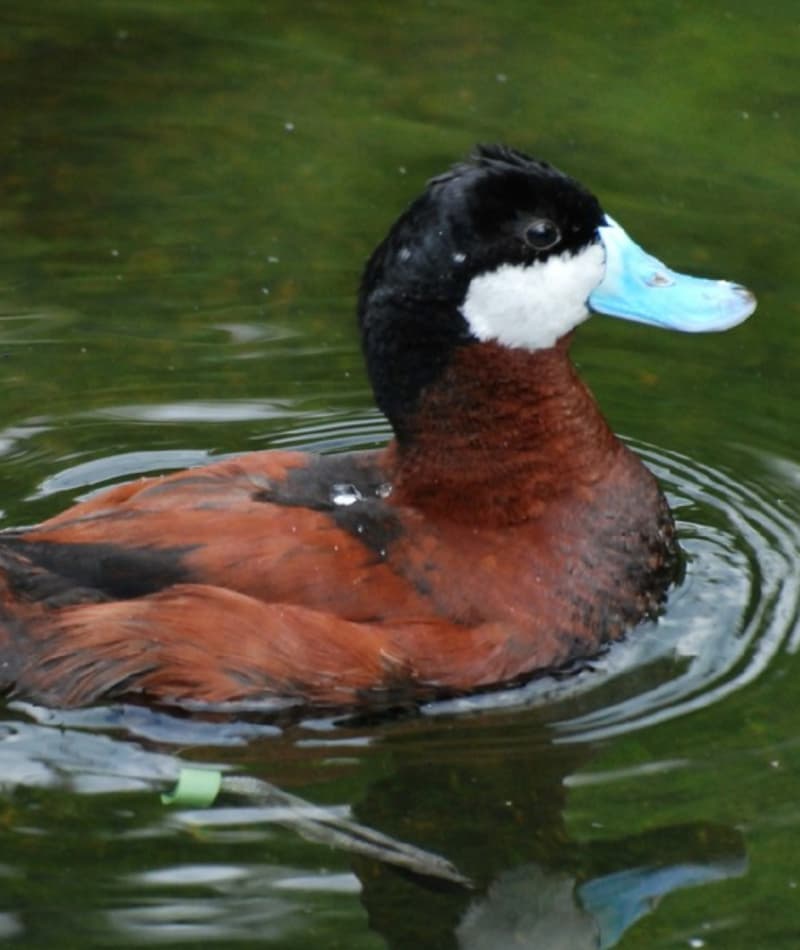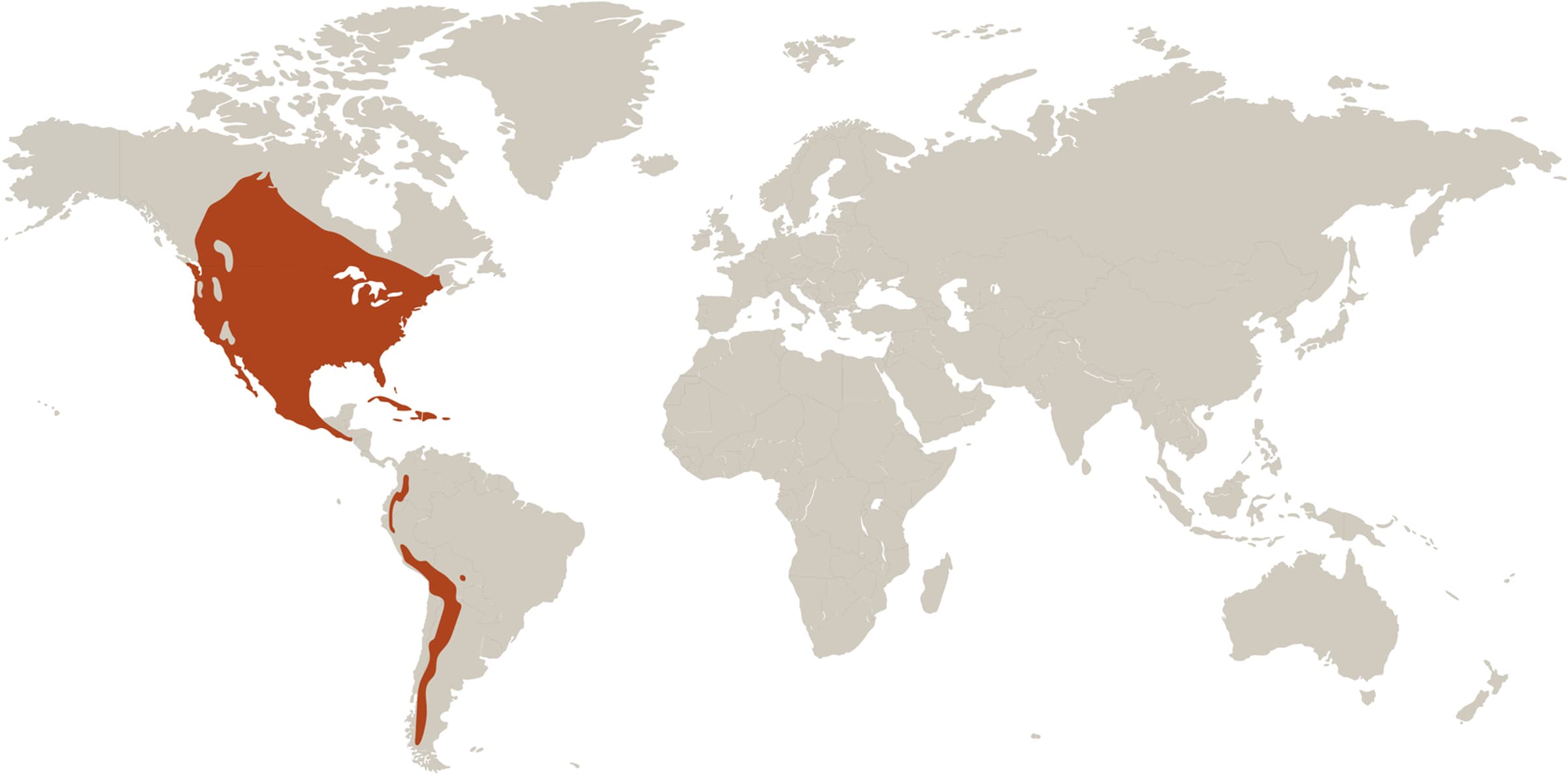
Ruddy Duck
Oxyura jamaicensis
Did you know?
- Its favorite foods include aquatic plants, insects and mollusks.
- This bird can gradually lower itself under the water to feed, which makes it look like it is sinking!
- A female typically lays five to 10 eggs.
- These ducks often lay eggs in others’ nests.
- Ducklings are able to leave the nest a day after hatching and can swim straightaway.
Adaptations
This little duck is easy to spot partly because it paddles around with its tail feathers held high. The tail comes in handy as a rudder as the bird dives underwater for food. In addition to diving, they can gradually lower themselves under water to feed, making it look like they are sinking!
Colorful Bills
In the summer breeding season, the male ruddy duck is a bright chestnut color with white cheeks, a black head, and a brilliant blue bill. Other times of year, he resembles the females' year-round color. Females are a dusky brown with pale cheeks and a black bill.
Threat Level
- Unknown
- Common
- Near Threatened
- Threatened
- Endangered
- Critically Endangered
- Extinct in the Wild
Common
The Ruddy Duck is widespread and abundant.
Range
North America, Central America, West Indies, South America
Habitat
Marshes, lakes, swamps, streams

We care about ruddy ducks
The Saint Louis Zoo supports ruddy ducks at the 1904 Flight Cage.
Find this animal in Historic Hill

SAINT LOUIS ZOO ZONE
Historic Hill
Historic Hill is a lovely stroll through one of the oldest parts of the Saint Louis Zoo. From the 1904 World’s Fair Flight Cage to the Spanish architectural flavor of the 1920s in the Bird House, Primate House and Herpetarium to the finishing touches of our thoroughly modern exhibits, this area of the Zoo has a unique ambiance and a nostalgic history that make it a great destination.

